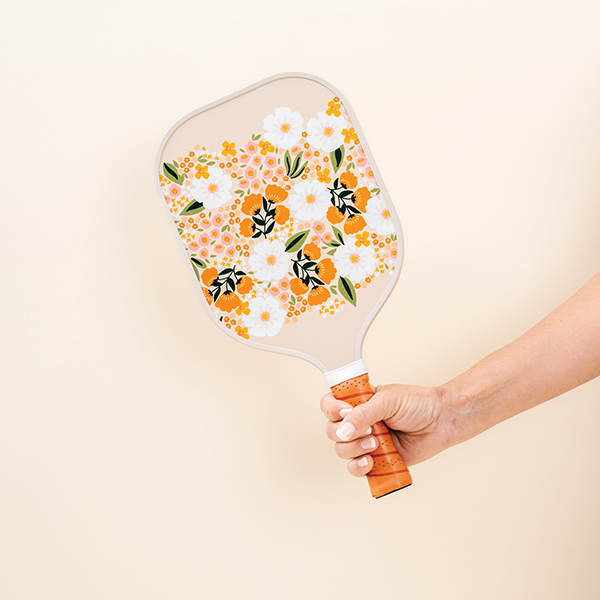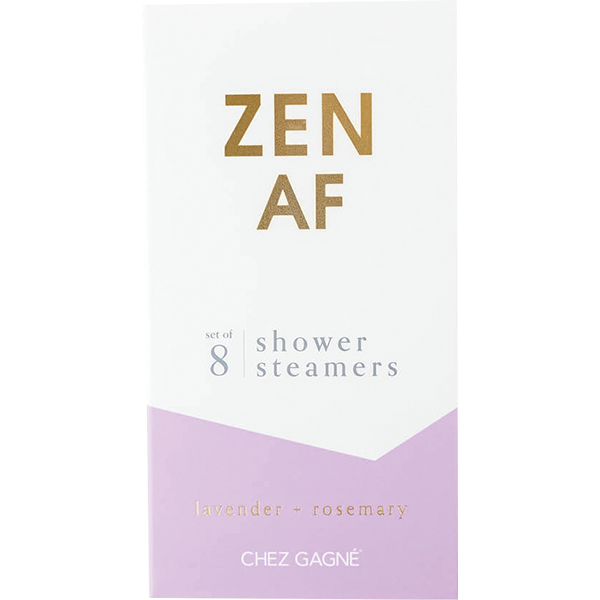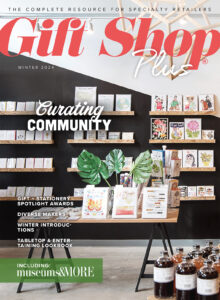This Grass Is Greener
This sustainable resource is a great choice for eco-friendly materials from furniture to clothing.
Bamboo and other sustainable materials are becoming hot commodities for producing jewelry, gifts and housewares as more consumers seek out eco-friendly alternatives to virgin materials. Savvy retailers like Amanda McClements, owner and creative director of Salt & Sundry in Washington, D.C, are stocking them not only because they are eco-friendly but they are affordable as well.
“My father is a carpenter who works primarily with reclaimed or sustainably milled woods, so I grew up aware of deforestation issues,” says McClements who offers a curated selection of tableware, barware, linens, artisanal foods and covetable vintage finds in her Union Market boutique.
These days one can find a wide range of items made from bamboo including housewares items like bowls and kitchen utensils to textiles such as towels, apparel and even undies.
 “Bamboo is one of the most remarkable resources on Earth,” says Juliet Morrison, marketing director for CoreHome, a wholesaler of housewares and home décor products using bamboo and other natural wood products. “As a member of the grass family, not a tree, it grows at a much quicker rate than any other wood. From start to harvest (60-70 feet tall) it can take just four years.”
“Bamboo is one of the most remarkable resources on Earth,” says Juliet Morrison, marketing director for CoreHome, a wholesaler of housewares and home décor products using bamboo and other natural wood products. “As a member of the grass family, not a tree, it grows at a much quicker rate than any other wood. From start to harvest (60-70 feet tall) it can take just four years.”
Bamboo is a 100% renewable resource, which does not need re-planting, extensive irrigation, pesticides or fertilizer, she adds. “When bamboo is harvested, its natural root system spreads and automatically regenerates itself,” says Morrison .
Is it really eco-friendly?
Deterrents are quick to point out that most bamboo still needs to be shipped to the United States from China and thereby negates its eco-friendly label.
 Kinder Chambers, spokesperson for the American Bamboo Society, which works to promote the beauty and utility of bamboo, scoffs at this logic. “Most all of the [bamboo] product that I know anything about come from native groves that are never fertilized or treated with any sort of sprays or chemicals,” says Chambers. “In my mind, folks who feel that shipping by ocean freight is not green are similar to the folks who work toward putting diapers on the bears in the woods.”
Kinder Chambers, spokesperson for the American Bamboo Society, which works to promote the beauty and utility of bamboo, scoffs at this logic. “Most all of the [bamboo] product that I know anything about come from native groves that are never fertilized or treated with any sort of sprays or chemicals,” says Chambers. “In my mind, folks who feel that shipping by ocean freight is not green are similar to the folks who work toward putting diapers on the bears in the woods.”
The fact that bamboo does need to travel from such a far distance isn’t lost on manufacturers or retailers. For most, the benefits of carrying products made using the material far outweigh the cons.
“Having to purchase it from overseas is one of the biggest disadvantages to carrying bamboo,” admits Katherine Reiter, owner of Our Greentopia, an eco-lifestyle boutique located in Berkley, MI. Her concern over how bamboo fabric (viscose) is produced has led her to only working with vendors who use low-impact dyes and whose fabrics are Oeko Tex 100 certified.
Jeffrey Delkin, president and co-founder of BAMBU, spent two and a half years learning about bamboo before he launched the company 10 years ago. He understands the debate but reminds customers that China has the world’s largest supply of bamboo and not all bamboo is the same. “Our production techniques consume little energy,” says Delkin. “We work with skilled craftsmen who know the material well. We conduct audits on our source, and also capture the waste to make beautiful products like our bamboo Pebbles, for instance.”
McClements agrees with Delkin. “We weigh these decisions as best we can and feel that BAMBU’s eco-friendly initiatives help balance the scale,” she says.
To market, to market
 So once the decision is made to bring bamboo products to market, what are your options as a retailer?
So once the decision is made to bring bamboo products to market, what are your options as a retailer?
“I personally love using bamboo utensils in the kitchen, so it was a given that we’d stock them,” notes McClements. “They’re lightweight and durable – great for everyday kitchen tasks.” She also stocks a variety of kitchen tools from sauce spoons to tongs and teaspoons, as well as baby feeding utensils.
“I’m seeing more specialized tools, like honey dippers and risotto spoons,” adds McClements.
Housewares items are popular. Tom Sullivan’s wholesale company, Totally Bamboo, manufacturers cutting boards but takes them one step further by designing them in the shape of all 50 states. According to Sullivan, retail customers can expect to see some new gift boxed Sushi sets with incredible laser engraving and some very intriguing new dark bamboo they recently developed.
More and more people are discovering the comfort of bamboo both in apparel, nightwear, for their babies and to sleep in, says Nancy Morgan, President of Yala, a wholesaler and retailer of products for the home and to wear using natural fibers. Morgan had been working in China for many years and was drawn to bamboo because it felt soft, was less expensive and easier to care for than silk.
Reiter carries a large selection of bamboo products to appeal to her customers. “We currently carry a wide array of bamboo products including bamboo kitchen items such as cutting boards, kitchen utensils, trays and serving bowls; bamboo women’s clothing; bamboo towels and sheets; and, bamboo baby crib sheets, towels, cuddle sacs and onesies,” she says. “All of the fiber in the apparel, sheets, towels, etc. is officially known as viscose made from bamboo.”
Reiter is encouraged because she feels her customers are already more familiar with bamboo than when she first opened less than a year ago. She predicts bamboo clothing and sheets will become trendier over the next few years as more consumers become aware of them.
Once at market, how TO market?
 “People are curious about the process but mostly people fall in love with the feel of the fabric,” adds Morgan. “For this reason it is a very hands-on experience and important that customers can feel the fabric.”
“People are curious about the process but mostly people fall in love with the feel of the fabric,” adds Morgan. “For this reason it is a very hands-on experience and important that customers can feel the fabric.”
For apparel, she recommends allowing customers to let them hold the product in their hands. She lets customers touch the sheets and let them feel firsthand how cool it feels against their skin.
Reiter takes advantage of her store’s overall green mission to reinforce the reason she carries bamboo items. “Because of our earth-friendly theme, most of our displays are upcycled old furniture,” she says. “I think using upcycled furniture in new and creative ways is a great way to project an earth-friendly feel to what is being sold. For example, we re-conditioned an old beautiful wood door, put it on old re-painted table legs and added a glass top to make a really cute and very functional display for our bamboo kitchen products.”
The display prominently sits slightly to the right and in front of the front door and, as a result, receives a good deal of attention from almost all of her customers. “Another example is we use an old chair to hang our bamboo sleepwear,” she adds.
Aside from the visual merchandising technique, retailers and wholesalers both say education is a key element to selling bamboo products. “Retailers should emphasize that bamboo is a 100% renewable resource which does not need re-planting, extensive irrigation, pesticides or fertilizer,” recommends Morrison. “Bamboo is also the perfect material for food preparation. It is 16% stronger than maple and 33% lighter in weight than oak. This substantial, yet light-weight material does not dull knives.”
Another thing not to overlook: product packaging. Delkin recommends retailers look at packaging to make sure it is not only attractive but also produced using eco-friendly materials to reflect and reinforce the eco-friendly story.
“Create a ‘green story’ in your store that merchandises several green materials together [and] not just bamboo,” suggests Delkin. “Cork, is another one. Hemp is another. A cross-section of ‘eco friendly’ materials helps to tell a stronger story.”
One display idea Delkin is fine not seeing to promote bamboo: bamboo poles. “Displays of bamboo poles is a bit outdated in our minds,” he notes. “Smart, clean and modern is how we would display our store.”
But, wait, there’s more than just bamboo
 As Delkin refers to in his merchandising idea, there is more to the green story than just bamboo. David Hoots, owner and partner of Enrico Products, a gift and housewares wholesale company, produces several items in its offerings from around the world that feature eco-intelligent, sustainable and reclaimed materials.
As Delkin refers to in his merchandising idea, there is more to the green story than just bamboo. David Hoots, owner and partner of Enrico Products, a gift and housewares wholesale company, produces several items in its offerings from around the world that feature eco-intelligent, sustainable and reclaimed materials.
“We have always looked for materials and products with a good sustainable backstory and great aesthetic appeal, whether its fir or teak or mango, or even naturally fallen wood from the forest floor,” Hoots shares. “Our key collections – RootWorks and Casual Dining – are made from wood that would otherwise be thrown on the scrap heap or burned. RootWorks is made from tree stumps left after logging operations that are dug up to clear the way for new planting. The stumps happen to have incredible sculptural appeal and beautiful grain characteristics which are highlighted by the skilled carvers who make our bowls and other items.”
The products in his Casual Dining and the other mango collections are made from mango trees that are culled from Thai mango plantations when they stop fruiting so new trees can be planted. “Instead of discarding the wood, our artisans transform it into all sorts of wonderful products we design collaboratively,” Hoots adds. “Mango is perfect for turning and carving, and it takes colored stain and paint very nicely. Both of these materials have been in use for some time, we just leverage their great workability and sustainability to make interesting and unique products.”
Amanda Judge, founder and CEO of Faire Collection, a fair trade accessories brand and social enterprise, often incorporates tagua nut into jewelry pieces. “Tagua is one of our favorite natural materials to work with,” says Judge. “The tagua nut can be carved into beautiful ornate shapes. The sky is the limit in terms of tagua and its many forms. Tagua is also durable and takes dye easily, making vibrant and stunning jewelry.”
Among their best-selling pieces are bold necklaces like the Galapagos Necklace and the Tagua Bib Necklace.
Green is nice but still it’s the design that sells
Everyone admits that whether it’s bamboo, sustainable wood or tagua, eco-friendly or not, if the item doesn’t look good, it won’t sell.
“Consumers are looking for greener options,” says Delkin. “So bamboo can be a nice option. However, to be successful and attract buyer attention, design and value are critically important. As they are with any product.”
Both Hoots and Judge couldn’t agree more.
“Good design is paramount, no matter the material used, so we concentrate our efforts on creating compelling products using our current materials as the starting point,” adds Hoots.
Judge knows her trend-driven customers won’t sacrifice style but they do appreciate and respond to the fact that the materials used to produce the designs are sustainable. “While sound sustainability and social responsibility practices definitely add value to our products, our costumers are drawn to our products first due to their contemporary, chic designs and outstanding quality,” notes Judge.
And with its adaptability to form and function, bamboo is looking to shoot toward new growth.






















